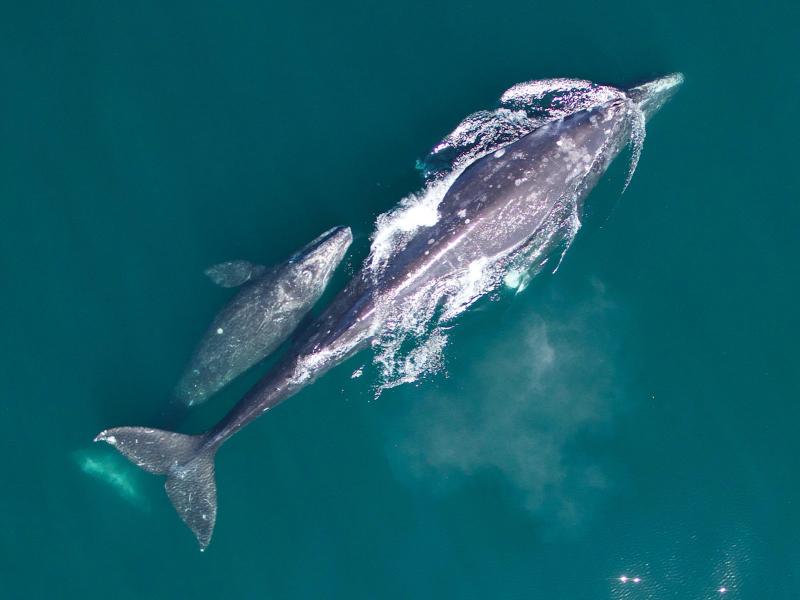
By NOAA News Service
The number of gray whale calves migrating with their mothers along the West Coast this year was one of the lowest on record, NOAA Fisheries researchers have found, but the overall whale population is still recovering after a die-off between 2018 and 2023.
Although the eastern North Pacific gray whale population that migrates annually along the West Coast has rebounded in overall abundance, the production of calves has remained low, according to NOAA’s latest counts.
A team from NOAA Fisheries’ Southwest Fisheries Science Center found that this year’s count — an estimated 221 mother-calf pairs — was close to the record low reported in 2022.
In 2023, NOAA researchers reporting seeing 412 mother-calf pairs swimming north — an increase from the estimated 214 in 2022. But the numbers are a significant dropoff from the most recent high count of the estimated 1,616 mother-calf pairs from 2014, according to the NOAA research.
NOAA reseachers estimated the gray whale population at 27,000 in 2016, declining to below 15,000 in 2023 before rebounding to an estimated 19,000 this year.

Most of the gray whale population feeds in the Bering and Chukchi seas off Alaska during the summer. Gray whale calf production has been tied to ice cover and food availability in the region, researchers say, and females must find enough food there to successfully produce and sustain calves.
“While we are no longer seeing the high number of gray whale strandings that the population experienced during the unusual mortality event, calf production has remained low — likely reflecting that some females have yet to regain the energetic resources needed to sustain pregnancy and lactation,” said Aimée Lang, lead author of the new NOAA Fisheries memorandum reporting the annual calf count.
Researchers have seen other declines in calf production since they started tracking the number of mother-calf pairs in 1994.
One of the declines coincided with an earlier die-off — NOAA calls them unusual mortality events — that ran from 1999 to 2000. Estimated calf production remained low in 2001 and then gradually rose in succeeding years.
Another decline from 2007 to 2010 was not tied to a die-off but coincided with reduced food availability in the Arctic. The reduced food supply appeared to affect reproduction without depressing overall numbers of whales or resulting in increased observed strandings.
The last die-off started in December 2018 and lasted through November 2023, with gray whale strandings peaking between 2018 and 2020.

Each spring, scientists count the northbound pairs of female gray whales with calves from Piedras Blancas on the central California coast.
“We have been tracking calf production in this population since 1994,” Lang said. “The data we’ve collected over the last 30 years have increased our understanding of the links between food availability, body condition, and reproduction in gray whales. They suggest that it may take time for the population to recover its reproductive capacity following events like this past unusual mortality event.”
NOAA said the science center will continue tracking gray whale numbers and reproduction to help understand changes in the population, including recovery from the recent die-off and the relationship to climate driven changes in the environment.



Comment Policy